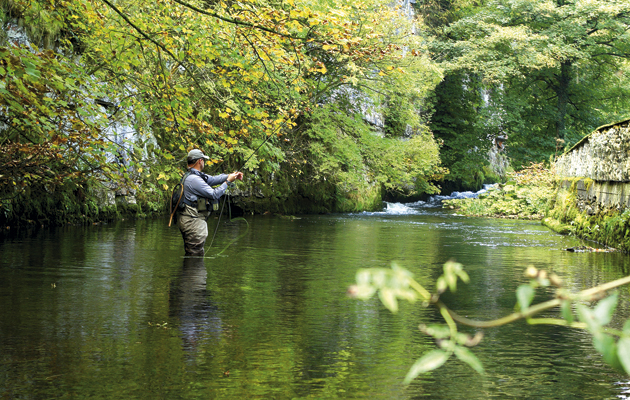Try one of our suggestions and your luck could change for the better.
The Field has whittled down the countless number of trout flies available to present the 10 essential trout-fishing flies that no angler should be without. Combined, these effective and deadly flies will hold you in good stead on any trout river in the UK, in any month of the season. They have proven their irresistibility to brown trout and their rainbow brethren with a multitude of catches to their names. Make sure you have them hooked into your fly box next time you head to the river.
You’ll find a list of The Field’s tried and tested trout recipes here. You might also like to read The Field’s guide to the top trout rivers
THE FIELD’S TOP 10 TROUT FLIES
BLACK GNAT

An imitation of a large number of natural flies that has been tucked into fly boxes for well over 100 years for good reason. It is successful right through the season but is particularly deadly in March. On rivers and streams, black-gnat clouds are frequently densest over the slower sections, making this fly the easy choice to tie on when there is little water current.
BLUE DUN

A nostalgic favourite of Harry Plunket Greene’s in Where the Bright Waters Meet and part of the heritage of British fly-fishing. Wherever the iron blue dun is found on the water it is of interest to the fisher, not only because of its striking appearance but because the fish seem to prefer it to any other dun. This fly is usually fruitful from the middle of April to the end of October.
FRENCH PARTRIDGE MAYFLY

This soft hackle dressing, representing a drowned mayfly spinner, has been popular for more than 200 years. When the natural flies are hatching, their emergence from the water is often spectacular, making them especially conspicuous to the trout. If you can land this replica anywhere near a fish at this time, it usually prompts an aggressive rise. The fly is most useful between May and June but is always a good option to try when nothing else is working.
GREY WULFF
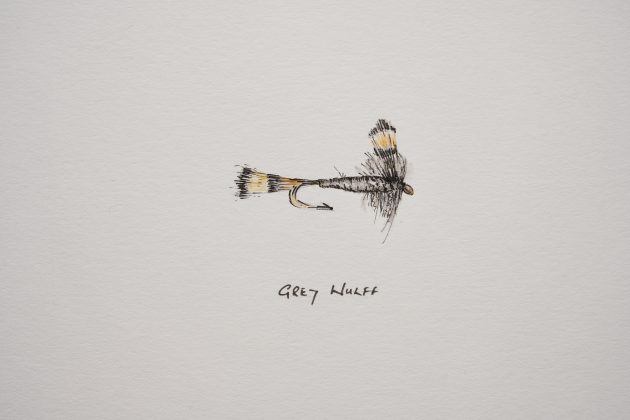
A classic dry-fly pattern that was first developed by Lee Wulff in the 1930s. The Grey Wulff is designed to imitate the adult stage of the grey caddis and is used to deadly effect in May. It is usually tied with grey-coloured deer hair for the body. The fly is designed to be high-floating to remain visible into the evening twilight. One of its most useful traits is that it can be fished in a variety of water conditions, particularly fast water as it rides well on the surface.
HARE’S EAR NYMPH
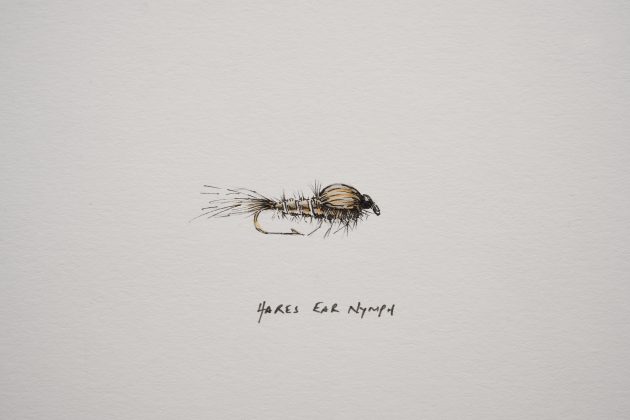
Arguably the most effective fly of all time and currently the most popular nymph fly bought by anglers. The Hare’s Ear Nymph is not an imitation of a particular insect but is instead a general representation pattern that is hugely successful in taking fish. Whether tumbling down a feeding channel or gently retrieved in a still water, this is a real killer. It can be used year round but works best between March and June.
HAWTHORN HOPPER

This black bandy-legged creation is ideal for sunny spring days when hawthorn flies flit along the hedgerows and among low bushes. These flies are the first of the terrestrial insects to cause a worthwhile rise, so it is advantageous to keep an eye out for their appearance. Although it has the most success when tied on between April and the end of May, it is also useful through the summer when black gnats are on the water.
KLINKHAMMER
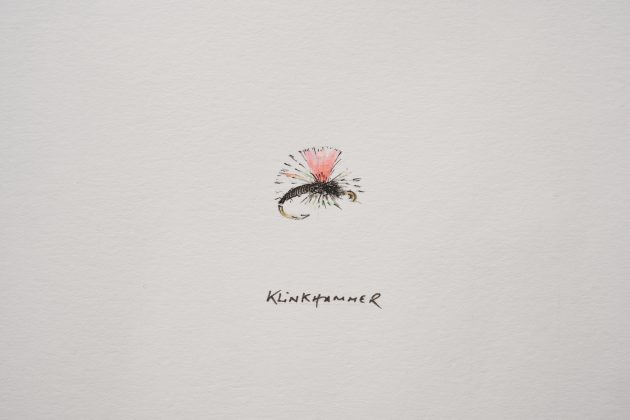
A member of the parachute dry-fly family, the Klinkhammer differs from its relatives as it is designed to hang down through the surface of the water to imitate an emerging insect, whereas the others all sit upright. There are many colourful variations, each one created by the Dutchman Hans van Klinken, and all perform well throughout the year on rivers.
PARACHUTE ADAMS

A fashionable variation of the Adams dry-fly, mimicking a variety of insects that sit on the water surface that a trout would happily snap up. The most notable difference from the original Adams is the top post or ‘parachute’, a useful marker for the angler to keep an eye on as it floats downstream. This fly can be used all year round but anglers tend to have the most luck with it from the end of March to the middle of June.
PHEASANT TAIL NYMPH
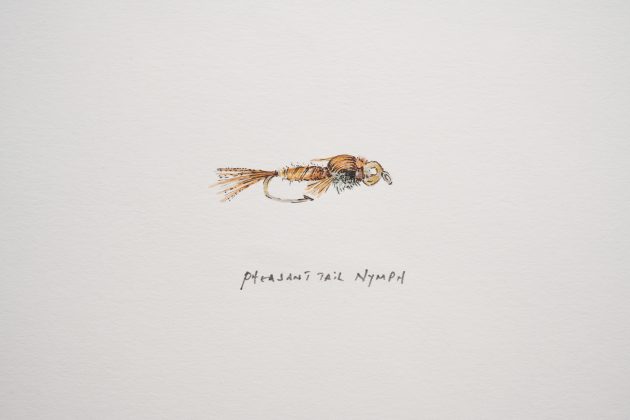
The popular fly choice for river fishing and productive throughout the year. These can be presented in many ways and in countless variations. The Goldhead Pheasant Tail Nymph allows the fly to drop quicker in the water with the added weight and thus reach low-lying fish.
WOOLLY BUGGER

The ultimate trout fly. Bill Hunter wrote in The Professionals’ Favorite Flies that ‘it should be banned from some watersheds’ due to its effectiveness. The fly resembles a plethora of tasty things a trout might like to eat. With such a wide scope, the Woolly Bugger can be used year round.





